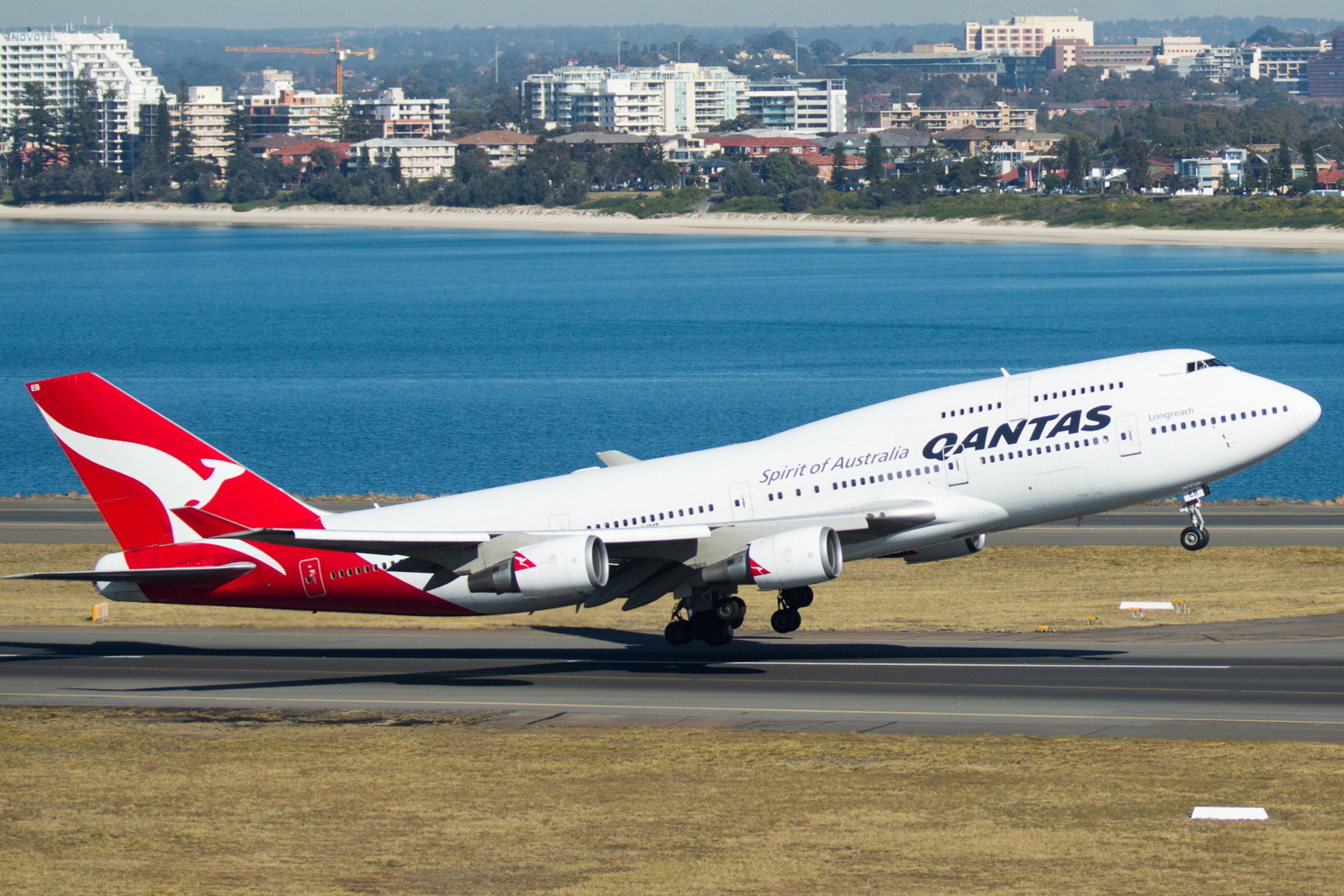|
Qantas has retired its fleet of Boeing 747 jumbo
jets.
The final 747-400 in the fleet (registration
VH-OEJ)
departed Sydney on Wednesday as flight number QF7474,
bringing to an end five decades of history-making moments for the
national carrier and aviation in Australia.
Qantas took delivery of its first 747 (a -200
series) in August 1971, the same year that William McMahon became
Prime Minister, the first McDonalds opened in Australia and Eagle
Rock by Daddy Cool topped the music charts. Its arrival � and its
economics � made international travel possible for millions of
people for the first time.
The fleet of 747 aircraft not
only carried generations of Australians on their first overseas
adventures, they also offered a safe voyage for hundreds of
thousands of migrant families who flew to their new life in
Australia on board a �roo tailed jumbo jet.

Qantas 747s
were at the forefront of a number of important milestones for the
airline, including the first Business Class cabin of any airline
in the world.
Qantas brought forward the scheduled retirement of the fleet by
six months after the COVID19 pandemic decimated international
travel globally.
Qantas Group CEO Alan Joyce said the 747
changed the face of Australian aviation and ushered in a new era
of lower fares and non-stop flights.
�It�s hard to
overstate the impact that the 747 had on aviation and a country as
far away as Australia. It replaced the 707, which was a huge leap
forward in itself but didn�t have the sheer size and scale to
lower airfares the way the 747 did. That put international travel
within reach of the average Australian and people jumped at the
opportunity,� Mr Joyce said. �This aircraft was well ahead
of its time and extremely capable. Engineers and cabin crew loved
working on them and pilots loved flying them. So did passengers.
They have carved out a very special place in aviation history and
I know they�ll be greatly missed by a lot of people, including me.�
Qantas
has flown six different types of the 747, with Boeing increasing
the aircraft�s size, range and capability over the years with the
advent of new technology and engine types.
�Time has overtaken the 747 and we now have a much more fuel
efficient aircraft with even better range in our fleet, such as
the 787 Dreamliner that we use on Perth-London and hopefully
before too long, the Airbus A350 for our Project Sunrise flights
non-stop to New York and London,� added Mr Joyce.
History of the Qantas Boeing
747
The first Qantas 747-238 was VH-EBA, named City
of Canberra and the first ever Qantas 747 flight was on 17
September 1971 from Sydney to Singapore (via Melbourne), carrying
55 first class and 239 economy passengers.
In almost 50 years
of service, the Qantas Boeing 747 fleet of aircraft has flown over
3.6 billion kilometres, the equivalent of 4,700 return trips to
the moon or 90,000 times around the world.
Qantas operated a
total number of 65 B747 aircraft including the 747-100, 747-200,
747-SP, 747-300, 747-400 and the 747-400ER and each had specific
capabilities such as increased thrust engines and increased
take-off weight to allow longer range operations.
The 747-SP
was the first 747 model that allowed non-stop operations across
the Pacific in 1984 which meant travellers no longer had to �hop�
their way across the Pacific and could fly from Australia to the
west coast of the US non-stop.
The 747-400 which Qantas operated
from 1989 opened up the US west coast cities non-stop, and
one-stop to European capitals.
In 1979, Qantas became the first
airline to operate an all Boeing 747 fleet.
The 747 also broke
records, including in 1989 when Qantas crew flew a world first
non-stop commercial flight from London to Sydney in 20 hours and
nine minutes. That thirty-year record was only broken in 2019 when
Qantas operated a 787 Dreamliner London-Sydney direct in 19 hours
and 19 minutes.
The Qantas 747-200, -300 & -400 models had a
fifth engine pod capability that could carry an additional engine
on commercial flights, a capability that was used extensively in
the early days of the 747-200 when engine reliability required engines
to be shipped to all parts of the world. Improved engine
reliability of the 747-400 and 747-400ER made this capability
redundant.
The size, range and reliability of the Qantas 747 meant
they were used for numerous rescue missions: flying a record 674
passengers out of Darwin in the aftermath of Cyclone Tracy;
evacuating Australians out of Cairo during political unrest in
2011 and flying medical supplies in and tourists home from
Maldives and Sri Lanka following the Boxing Day Tsunami in
December 2004. More recently the Queen of the Skies repatriated
hundreds of Australians from Wuhan, China as the COVID19 pandemic
started to gain momentum.
See also:
British Airways Retires Remaining Fleet of Boeing 747-400
Aircraft.
See latest
Travel News,
Video
Interviews,
Podcasts
and other
news regarding:
COVID19,
Qantas,
747.
|
Headlines: |
|
|
